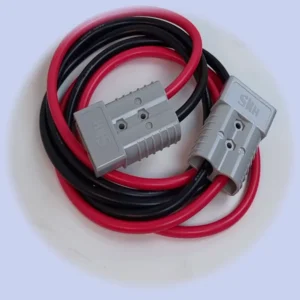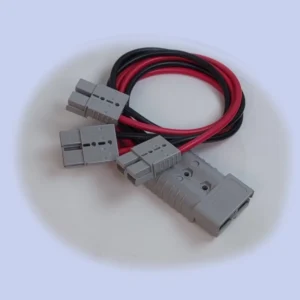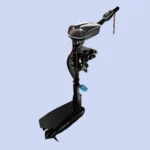About the motorzoo 11500W 20hp Electric Outboard – 48V
The 11500W 20hp motor is the largest and most powerful version of the motorzoo performance range of outboards.
It has the following specifications:
- Shaft. Adjustable long / medium / short shaft configuration to suit any application.
- Power. Rating of 11.5kW (approx. 20hp), drawing a maximum 240 Amps at 48 Volts.
- Propeller. Diameter 25cm (10 inch), pitch 25cm (10 inch), and spee 2400 RPM.
- Thrust. Force 1000 Newtons (225 Lb/pound). See guide to size motor for your boat
- Weight. Net 29kg (no battery).
- Motor. Patented hermetically sealed (watertight) magnetic induction drive motor. Brushless, no gears, no water pump.
- Controls. Smartphone interface. Tiller throttle, or optional remote throttle & steering.
Special Features of the motorzoo 11500W 20hp Electric Outboard
- Mimimal moving parts. The unit has an absolute minimum of moving parts.
Accordingly, there are fewer things that can go wrong in the marine environment. - No moving seal. The motor itself is self contained and hermetically enclosed (watertight) within a bulb at the bottom of the shaft.
As a result, there is no chance of water ingress into the electrical windings. - Magnetic induction drive. The motor itself drives a magnet.
In essence, this magnet induces rotation in another magnet that is attached to the propeller.
What does ‘Hermetically Sealed’ mean?
- No cooling system required. Because the motor unit is immersed in water, it is naturally cooled by the flow of water around it.
Having no requirement for cooling circuits means one less thing that can go wrong. But there are more benefits to the design:
- No driveshaft required. The shaft only contains the power cables that are required to power the motor. This means fewer moving parts.
What’s So Special About Not having a Drive Shaft?
- Elimination of gears. No drive shaft means no need for gears at the bottom of the shaft.
- Adjustable shaft length. This means that the 11500W 20hp electric outboard is adaptable to short, medium, or long shaft applications.
Example Bundle for the 11500W 20hp Electric Outboard
| Item | SKU | Description | Price | Qty | Net | |
|---|---|---|---|---|---|---|
 | OMD-115-48 | 11500W 20hp Electric Outboard - 48V | $8,497.00 | 1 | $8,497.00 | |
 | CMD-050-B3 | 2AWG Cable 350 Amp Extension 35mm2 - 2m Length | $410.00 | 1 | $410.00 | |
| Subtotal Motor & Cable | $8,907.00 | |||||
 | CMD-050-B3 | 6AWG Cable 350 Amp Parallel Adapter 16mm 2 | $165.00 | 1 | $165.00 | |
 | CMB-050-M8 | 6AWG Cable 120 Amp Battery Lead 16mm 2 | $68.75 | 1 | $68.75 | |
 | BOA-050-B1 | 2500Wh 48V LiFePO4 Battery | $1,694.00 | 3 | $5,082.00 | |
| Subtotal Battery & Cables | $5,315.75 | |||||
| Total Bundle | $13,989.00 |
What do you need to know about electric outboard motors?
There are two types of electric outboard motors. That is:
- trolling motors. Trolling motors will produce limited trust because of their limited power and propeller configurations.
A trolling motor might drive a dinghy of up to 3 meters in length, with a weight of up to say 200kg, to a speed of up to 4 knots.
But not much faster. - performance motors. Performance motors such as the 11500W 20hp create more torque, and are designed to drive larger craft.
Say up to 15 meters, with greater weights, up to 4,000kg, to greater speeds.
The maximum speed achievable will depend on factors such as:
- watercraft displacement;
- waterline length;
- motor speed;
- propeller diameter and pitch, and;
- other factors.
How Are Electric Motors Different To Petrol Motors?
Torque.
Electric outboards maintain a higher torque throughout the RPM range.
This means that electric outboards will have a higher peak torque for a given power output.
Efficiency.
Electric outboards operate at about 80% efficiency, with about 20% being lost as heat.
With petrol outboards, only about 25% of the energy converts to propulsion, with about 75% lost as heat.
Emissions.
Electric outboards have no noxious emissions, whereas small petrol motors generate lots of noxious emissions.
Not just CO2, but unburnt hydrocarbons, SO2, and NOx.
This is why the sale of two-stroke motors have been banned in Australia.
Noise.
Electric outboard motors operate at much lower noise levels than petrol motors.
This is especially true when the motor unit is immersed underwater.
Complexity.
Electric outboard motors have very few moving parts.
Small petrol engines, especially four-stroke ones, have an excessive number of parts, for their small size.
Power.
Larger petrol engines (of 50hp or more) have an advantage over electric motor driven models.
They can deliver the power required to get watercraft planing at high speeds for long periods.
This is why electric outboards with more than 20hp power rating are not common.
Why not just convert petrol outboards to electric?
Power considerations.
- The 11500W 20hp motor has a power rating of 11.5 kilowatts.
- The motor draws a peak current of 240 Amps, and therefore requires a battery of sufficient voltage to meet these requirements.
- This is why uses a 48V (48 Volt) Lithium-Iron-Phosphate power supply. Any battery of less than 48V would not provide the current required.
- Additionally, any battery of more than 48V would require special safety certification to work on.
So 48V provides the sweet spot for power delivery.
Otherwise there could be damage to the battery management system.
- A 50 Amp hour (48v50Ah) LifePO4 Battery will typically be able to deliver a peak current of 100 Amps.
- Therefore, a mimimum of three 48v-50Ah batteries would be required for the 11500W 20hp motor.
(Note, a 30Ah battery would not be sufficient). - The combination of 3x 50Ah batteries in parallel will deliver peak current of 240A for about 50 minutes.
(Note that this represents the minimum operating time, as it assumes full throttle for the whole time.)
Operating Safety
- LiFePo4 batteries are much safer to use than Li-Ion batteries, especially in an aquatic environment.
- We also prefer connections and cables with the highest water resistance rating.





Reviews
There are no reviews yet.